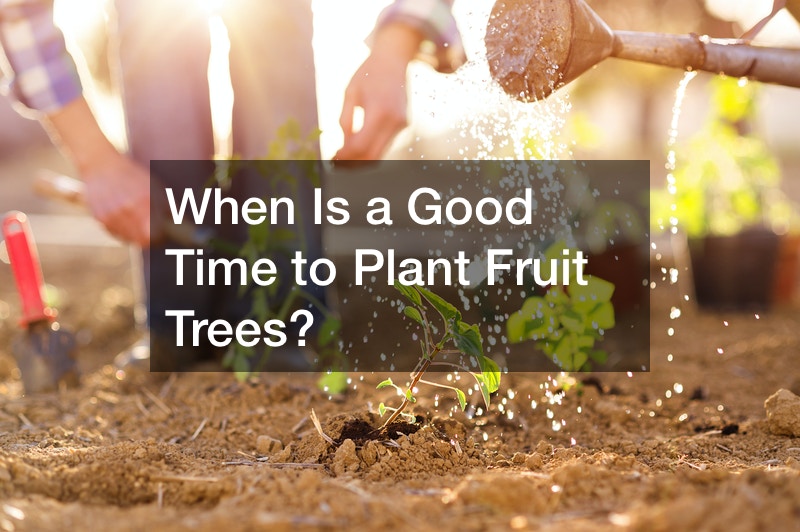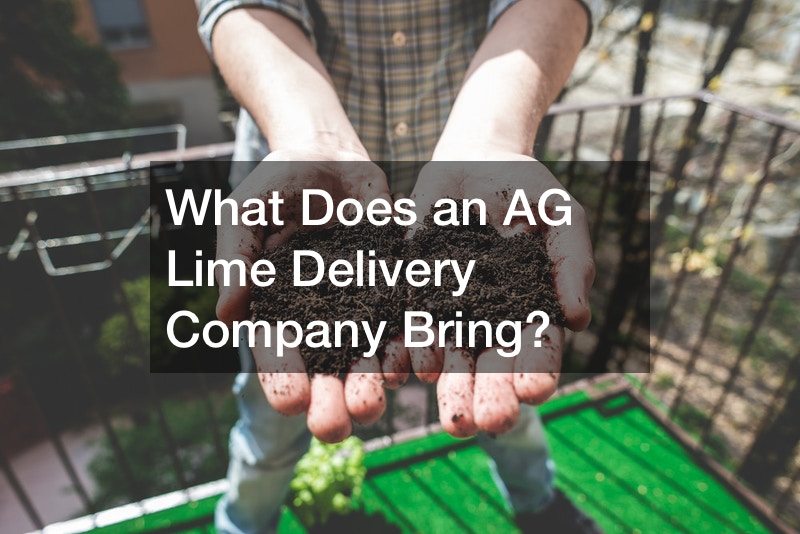
Growing a home orchard is not for the faint-hearted gardener. It requires a lot of time, energy, and hard work, from planting to harvesting. But in exchange for your labors, you will reap priceless rewards. When it comes to harvest time, there will be baskets overflowing with apples, pears, peaches, and plums.
To give your new orchard the best chance of success, you must know when is a good time to plant fruit trees. Starting your trees at the right time is crucial for their development, strong growth, and good fruit production. The following are the details you need to know about when is a good time to plant fruit trees.
What Kind of Fruit Do You Want to Grow?

Knowing what fruit you want to grow is the first step to knowing when is a good time to plant fruit trees. Decide which fruits grow best in your climate and soil type; consider if any pollination is required; and if you want the fruit for eating or cooking, bottling or canning. A tree arborist can help you with guidance on the type of fruit tree to grow in your location.
The main challenge about most fruit plants is that they take a long to grow. Hence, you do not want to waste your years planting a tree that would not bear you the desired fruits. Therefore, you need to be particular about the plant to grow. If you do not know the exact fruit to grow in your area, the entire exercise might be a total failure. Once you have identified your fruit plant, you can move on to the next step of knowing the kind of climate it needs and when to plant it.
When to Grow Different Types of Fruit Trees
Are you wondering when a good time to plant fruit trees is? Planting a tree during the wrong season might not thrive well due to weather conditions. Keep reading to learn more about what fruit trees to grow and during which season.
Containerized trees are your ideal choice of plants that can be grown almost any time of the year. These plants are grown in already established soil which has all the necessary nutrients needed for the plant to thrive. However, these plants thrive best when grown in autumn and early winter (September, October, and November) or during late winter and early Spring (February, March, and April). These seasons provide the ideal climate for these plants to thrive and produce maximum yields. These plants do not need much care, and you can easily monitor their growth in the garden shed.
Bareroot trees are the types of trees stored without soil in their roots. These plants are uprooted by a tree removal company when they have no flowers or leaves, and this period is considered their dormant season. The trees are soaked in moisture and planted in the late winter and Spring. These are usually the months of February, March, and April. Although May might not be an ideal time to plant these trees, they have proven to thrive well when planted during this period. If you wish to grow such a tree, you can request a tree removal service to uproot it at the right time. When is a good time to plant fruit trees? Every season provides different climatic conditions, affecting your tree’s growth. Hence, identifying the right season for every tree is ideal.
Fall and Winter

During this season, it is ideal for planting dormant trees and shrubs. This season is an excellent time to plant trees that require pole pruning and training. Winter in some regions compares to early Spring if the weather is warm. Such is due to the perfect climatic conditions that make it easy for the plants to grow and develop. Early winter is only ideal for people living in areas where the tree hardness is eight or above. You should also avoid planting your trees when the ground is frozen, preventing them from growing as expected. If you live in an area that experiences harsh winters, you should avoid planting your plants in the fall because they would dry. Suitable fruits: apples, apricots, cherries, nectarines, pears.
Early Spring
When is a good time to plant fruit trees? Early Spring is the perfect season for growing most of the fruit trees. It is also ideal for areas with a plant hardness below seven because the autumn and winter months in such locations tend to be very cold. It would help if you also waited until the soil is not too wet before planting your fruit trees.
Late Spring and Summer
This season is ideal for planting containerized trees. However, the summer can have extremely harsh weather that could prevent the trees from thriving well. For instance, dry wind, high heat, and low moisture could cause the plants to dry. You should avoid planting this season if you live in a region with a plant hardness level of below 7. These regions usually experience harsh winters.
Suitable fruits: apples, apricots, cherries, peaches, plums
Winter
When is a good time to plant fruit trees? People should not plant fruit plants during the winter season. During this period, the air has a lot of moisture, which could damage your plants. According to arborists, the moisture in the soil could cause the young roots to rot. If you must plant your trees during winter, it is advisable to do it early or late winter when the temperatures are still favorable.
USDA Hardiness Zones
When is a good time to plant fruit trees? Such depends on location. USDA hardiness zones indicate the number of winter temperatures a plant can withstand. Experts measure the temperatures at °F. They have also numbered the zones from 0 to 10. Such means that if you live in an area with a plant hardness level of 8, you should grow plants with a hardiness code of 8. The hardness zones for Apple trees range from 3 to 9. Such range varies depending on the variety of the Apple tree. Sweet Cherry trees thrive well in hardness zones ranging from 4 to 8. Frost-tender and citrus trees can rarely survive in a hardness level of less than 9. If you have to plant these trees in such areas, ensure you keep them indoors during the summer to prevent the tree from cold-damage. Whenever you notice damage to your tree, you can contact an emergency tree service to get the necessary help.
Each region has its plant hardness zones that vary depending on the climate. Such makes it hard to determine the best time to plant different kinds of trees in various regions. For instance, you can only find out which hardiness zones accommodate your plants in your region through a tree care company. In addition, these companies can also tell you which types of trees are suited for your region.
Fruit Plant Planting Instructions

When is a good time to plant fruit trees? Such depends on climate. Most fruit plants require a minimum of 8 hours of direct sunlight to thrive well. According to tree trimmers, these conditions help the tree thrive faster because the sun facilitates photosynthesis. If your tree does not get enough sunlight, its photosynthesis process will be slow. The tree would not get enough nutrients, hence a slow growth rate.
Therefore, you must ensure that every tree is planted in the right conditions and using the right procedures. It is also important to note that the roots are dormant when you plant them, and you should ensure that the tree has enough water.
A bare root tree is planted by first digging a wide hole in your preferred location. You should trim the rotten roots and plant your tree in the dug hole. The next step is to remove the tree wrap and soak it in water for a few hours. Ensure the tree gets enough water to prevent it from drying shortly after planting.
Containerized trees are planted by first removing the soil around the roots. You should then fill in the hole with soil and water it again. For most plants, you should fill in a ratio of ½ cup peat moss for every 4 cups of soil. Then add fertilizer or organic fertilizer that matches your soil’s condition and place these around the tree so the roots can absorb them properly. When you visit a garden center, you will get all the information about planting different fruit plants. When is a good time to plant fruit trees? Well, you’ll want to factor these considerations into that decision.
Determine What Type of Climate You Have
The climate in your area is the biggest factor in deciding what to plant. If you live on a wide expanse of land where the temperature varies widely throughout the day, you’ll need to consider planting various trees, shrubs, and vines. Such will provide as many different flavors and produce as much fruit as possible.
If It’s in the Ground, It Should Have the Best Conditions
Unlike container-grown plants, in-ground trees and bushes are more likely to have pests and diseases. It’s important to know what type of pests and diseases are common in your area and the recommended control measures for these problems.
Start Young If You Can
Before you start a new tree or bush, you’ll need to consider how old your existing trees or bushes are. According to the U.S. Department of Agriculture, trees planted at least 24 months old are more robust and have a higher survival rate. Hence, you should consider planting such plants instead of planting them fresh from the seed.
When planting, try to include trees at least three years old that have been tested and proven in your area. Such is because they will be more robust, can better withstand the elements, and have better survival rates after being planted into your soil.
Consider the Care Cycle

Such is not just a flower thing. It’s a tree thing as well. When choosing a fruit tree for your yard or garden, you’ll want to consider if the care cycle is right for you and your family. Some trees might require too much attention than others. In such a case, you must be available to ensure the plant thrives as expected. For instance, you might need to spray pesticides during the tree cycle.
Consider the Size of the Fruit Tree
When is a good time to plant fruit trees? Before you plant your fruit tree, be sure to determine the mature size of the fruit tree so that there are no surprises when they reach their full adult height. The rootstock determines the size of the tree it is grown on. The rootstock will affect the size of the trunk and branches that grow from the tree. Rootstocks keep the branches small and prevent them from sprouting too far away from the trunk.
Consider the Kind of Fruit Tree
Fruit trees can exist in four classes: those that produce small and large fruits, high producers, wide-spreading trees, or compact trees. Before you decide when to plant a fruit tree, you need to know its type and the best climate in which it can thrive. You do not want to plant a fruit tree that will die after a few months because this can cause you losses. If you are planting fruit trees in your backyard, you need to research the climate where you live. In some cases, the area’s best type of fruit tree might be very different from your expectations.
When is a good time to plant fruit trees? Fruit trees are a long-term investment; therefore, you should consider the benefits and costs before planting them. They are important because they provide fruits widely used in products such as jellies, jams, preserves, pies, juices, and cuisines such as Italian food. The most important thing about growing fruit plants is knowing the ideal time to grow them. You ought to know the weather conditions in your area first before deciding which season is ideal for you to plant your tree. Such would prevent you from incurring losses, especially when your trees fail to thrive as expected.



